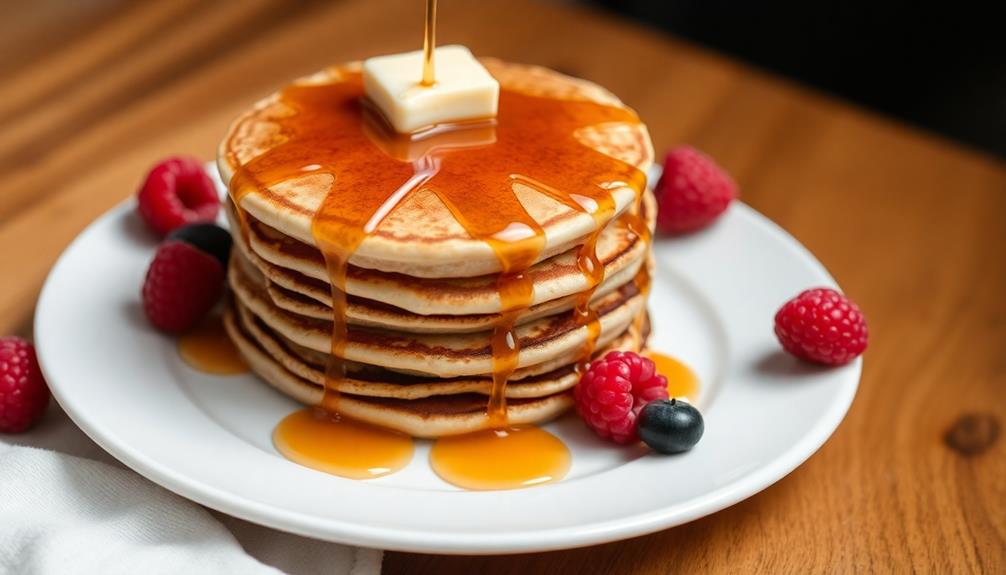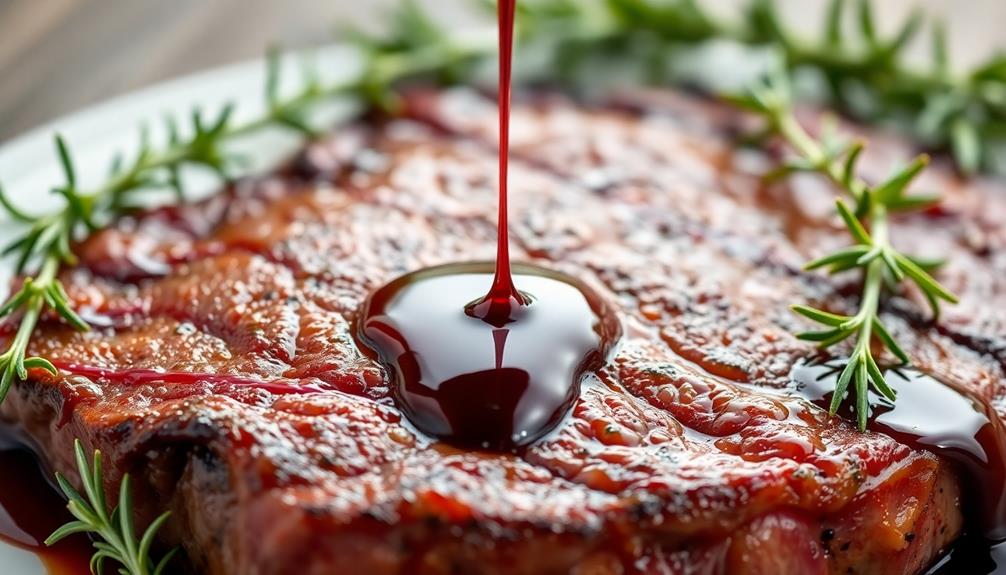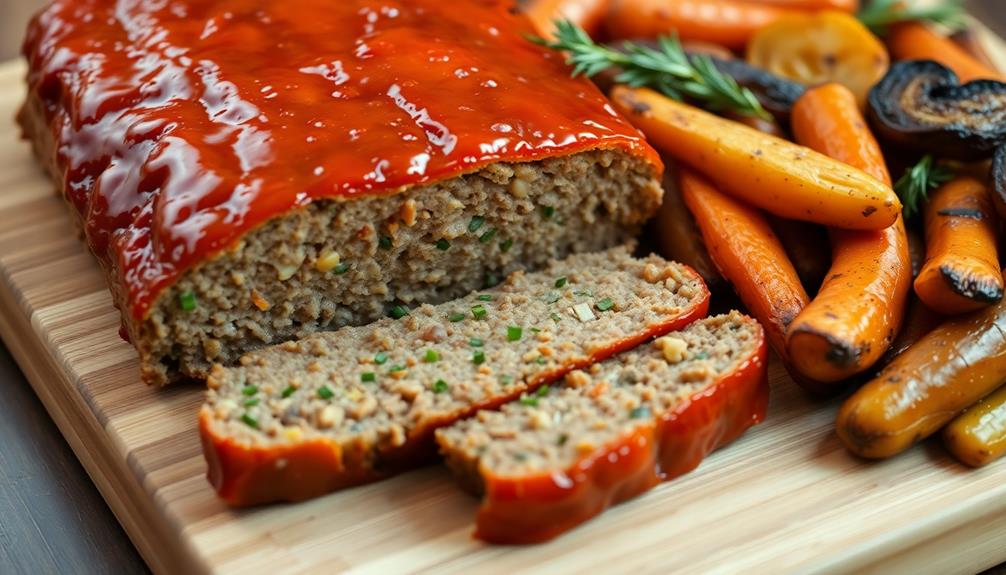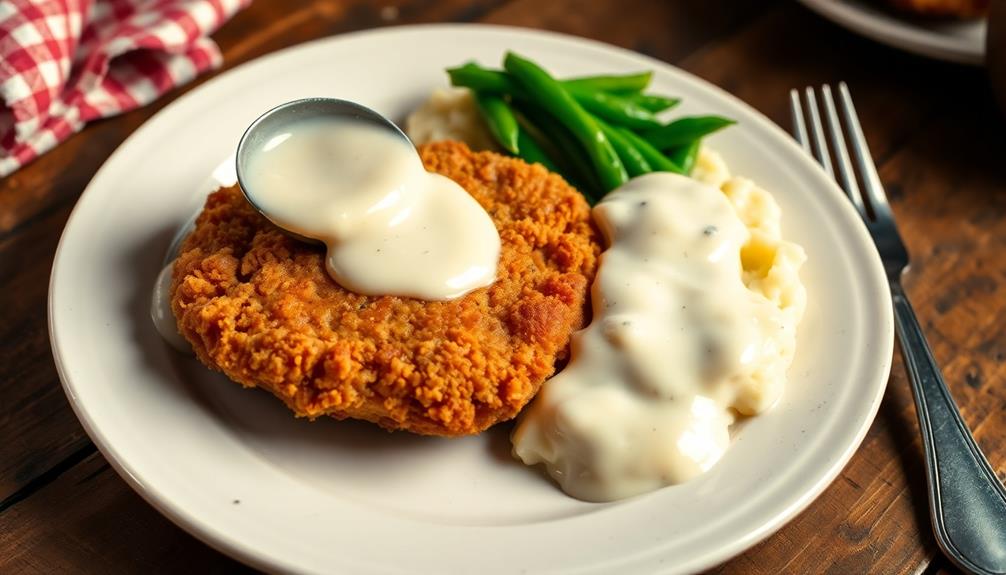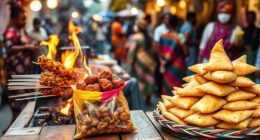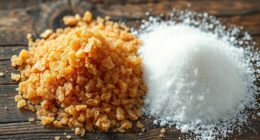You're in for a real treat as we journey through the captivating history of pancakes! From their ancient origins in Greece and Rome to the modern culinary artistry that's elevating this beloved breakfast favorite, pancakes have captured the hearts and taste buds of people around the world. Discover the rich tapestry of cultural traditions, global variations, and the timeless appeal that's made pancakes a cherished part of family gatherings and celebratory occasions. With a classic recipe, expert cooking tips, and insights into the versatility and nostalgic comfort of this breakfast icon, you'll be ready to master the art of the perfect pancake stack. There's so much more to explore!
Key Takeaways
- The evolution of pancakes spans ancient civilizations, from the flatbreads of ancient Greece and Rome to the modern American breakfast staple.
- Pancake recipes have been shaped by cultural traditions, such as the Shrove Tuesday celebrations in medieval Europe and the experimentation with cornmeal in Colonial America.
- Global variations, including French crêpes, Russian blini, and Japanese okonomiyaki, showcase the versatility and diversity of pancake dishes worldwide.
- The classic pancake recipe, with its emphasis on balanced ingredients and precise cooking techniques, ensures the perfect fluffy and golden-brown stack.
- Pancakes continue to evolve, with innovations in ingredients, cooking methods, and technological advancements, as well as a growing focus on health-conscious and sustainable options.
History
When did the first pancakes emerge? Believe it or not, pancakes have been around for a very long time! The earliest pancake-like foods can be traced back thousands of years to ancient civilizations.
The ancient Greeks and Romans enjoyed flat breads cooked on hot stones. These early pancakes were often made with simple ingredients like flour, eggs, and milk. As time passed, people in different regions started putting their own spin on pancakes, using local ingredients and flavors.
In medieval Europe, pancakes became a popular Shrove Tuesday tradition, as people used up rich foods like eggs and milk before the fasting of Lent.
Pancakes were also enjoyed in colonial America, where settlers experimented with new recipes using ingredients like cornmeal.
Today, pancakes remain a beloved breakfast treat worldwide, with endless variations to enjoy. From fluffy stacks to savory crepes, the humble pancake has come a long way!
Recipe
Pancakes have been a beloved breakfast dish for centuries, with variations and recipes evolving through different cultures and time periods. At the heart of every great pancake lies a simple yet delicious batter, which can be tailored to individual tastes and preferences.
Today, we'll explore a classic pancake recipe that captures the essence of this timeless treat. With just a few common ingredients and a bit of culinary know-how, you'll be able to create fluffy, golden pancakes that will delight your senses and satisfy your hunger.
- 1 1/2 cups all-purpose flour
- 3 1/2 teaspoons baking powder
- 1 teaspoon salt
- 1 tablespoon white sugar
- 1 1/4 cups milk
- 1 egg
- 3 tablespoons butter, melted
To prepare the pancakes, begin by mixing the dry ingredients – flour, baking powder, salt, and sugar – in a large bowl. In a separate bowl, whisk together the milk, egg, and melted butter.
Gently fold the wet ingredients into the dry ingredients, being careful not to overmix the batter. Heat a lightly oiled griddle or skillet over medium heat. Pour the batter onto the griddle, using approximately 1/4 cup for each pancake.
Cook the pancakes until bubbles begin to appear on the surface, then flip and cook until golden brown on the other side. For the best results, be sure to let the batter rest for a few minutes before cooking. This allows the gluten to relax, resulting in a more tender and fluffy pancake. This relaxation of the gluten allows for better protein denaturation in cooking, which is essential for achieving the desired texture and taste. Additionally, to ensure even cooking, make sure to use a non-stick skillet or griddle and lightly grease it with butter or cooking spray. Once the pancakes are done, serve them immediately with your favorite toppings and enjoy!
Additionally, experiment with mix-ins such as fresh fruit, chocolate chips, or nuts to create your own unique pancake creations. Serve the pancakes warm, with your favorite toppings like maple syrup, whipped cream, or fresh berries.
Cooking Steps
Preheat that griddle to medium-high and get ready to pour on the batter – about 1/4 cup at a time.
Wait until the edges start to set, then flip that pancake and cook it until it's lightly browned.
Once it's ready, serve it up with all your favorite toppings!
Step 1. Preheat Griddle to Medium-High
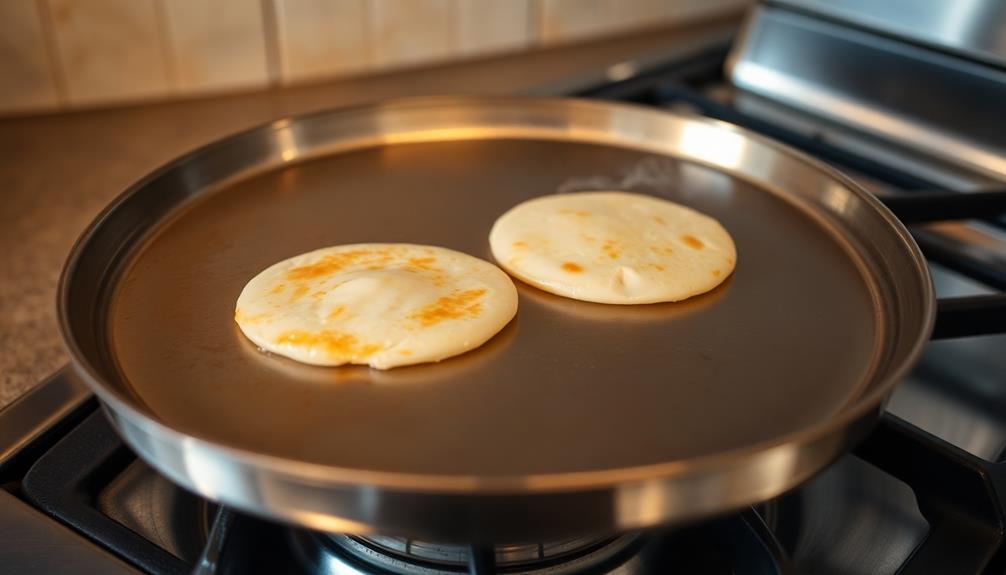
Before you begin mixing your batter, it's important to properly preheat your griddle to a medium-high temperature. This crucial step ensures your pancakes cook evenly and develop that perfect golden-brown color.
To do this, simply turn your griddle on and let it heat up for about 5 minutes. You'll know it's ready when you can hold your hand a few inches above the surface and feel the intense heat radiating from it. Be careful – that griddle will be hot!
Now, you might be tempted to crank the heat all the way up, but resist the urge. Medium-high is the sweet spot. Any hotter, and your pancakes will burn on the outside before the insides are fully cooked.
Too low, and you'll end up with pale, soggy discs. Finding that just-right temperature takes a little practice, but soon you'll be flipping perfect pancakes every time.
Step 2. Add Batter by 1/4 Cup
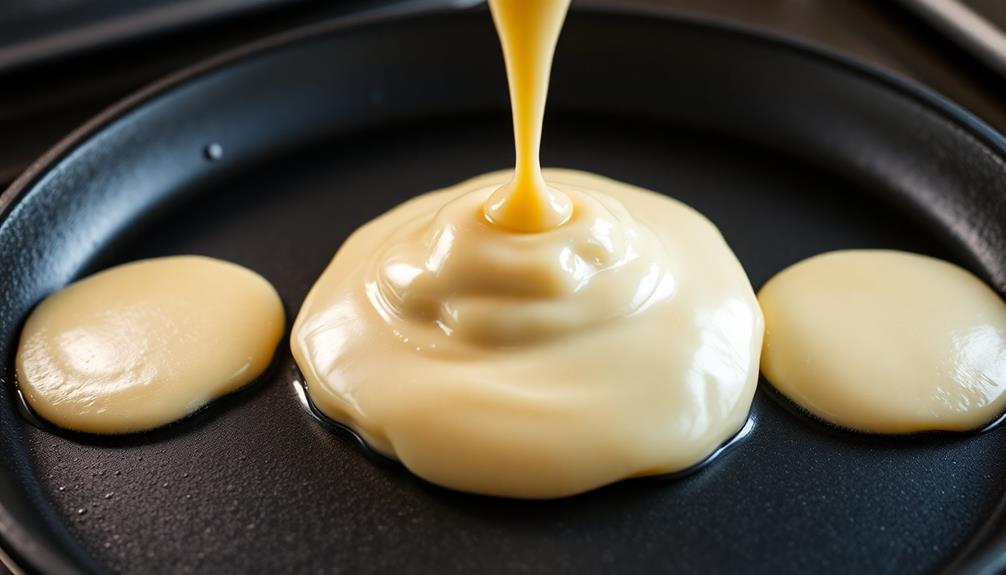
With your griddle preheated to the perfect temperature, it's time to start ladling the batter.
Grab your measuring cup and scoop up a 1/4 cup of the luscious pancake mix. Gently pour it onto the sizzling surface, watching as it spreads out into a delightful circle.
Be careful not to overcrowd the griddle – you want to leave enough space between each pancake for them to cook evenly.
As the batter hits the heat, you'll see it start to bubble and set. This is the magic moment!
Keep an eye on the edges, waiting for them to turn a lovely golden-brown. Once you see that transformation, it's time to flip.
Slide your spatula under the pancake and with a swift motion, turn it over. Listen to the satisfying sizzle as the other side cooks to perfection.
Repeat this process, adding more 1/4 cup portions of batter, until you've created a stack of fluffy, golden-brown pancakes, ready to be topped with your favorite sweet treats.
Step 3. Flip Pancake When Edges Set
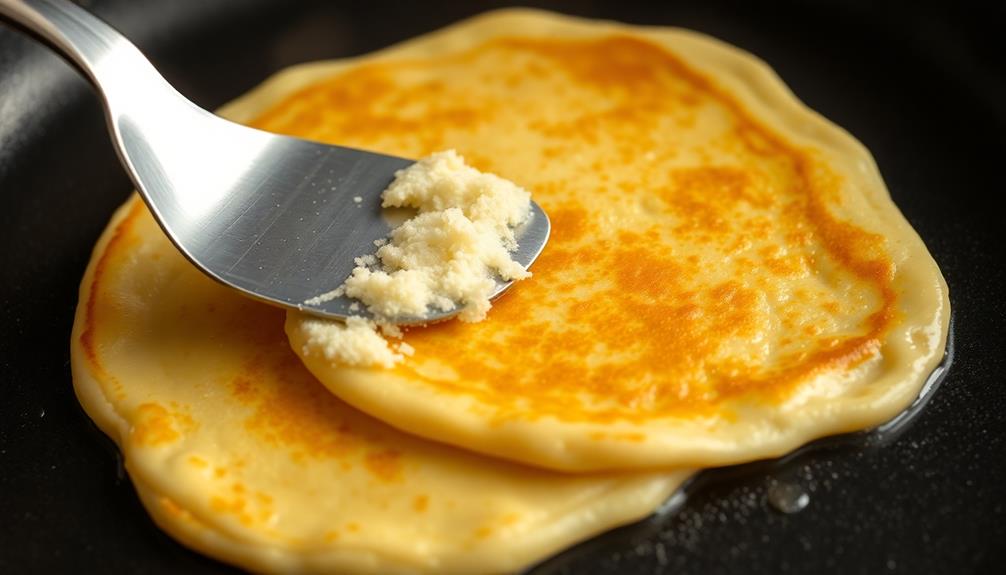
As the batter sizzles on the preheated griddle, keep a close eye on the edges. Once they start to set and turn a beautiful golden-brown, it's time to flip your pancake.
Gently slide your spatula underneath, making sure to get the entire surface, and with a quick, confident motion, flip it over. You'll hear that satisfying sizzle as the uncooked side hits the hot surface.
Don't be afraid to peek – lifting the edge will let you see if it's ready. The pancake should release easily from the griddle when it's time to turn it. If it's stuck, let it cook a little longer.
Once flipped, the other side will cook quickly, so keep an eye on it. In just a minute or two, you'll see the edges start to dry out and the top develop those lovely little bubbles. That's your cue to slide the spatula back under and transfer your perfectly cooked pancake to your plate.
Repeat this process for each fluffy, golden disc in your stack.
Step 4. Cook Until Lightly Browned
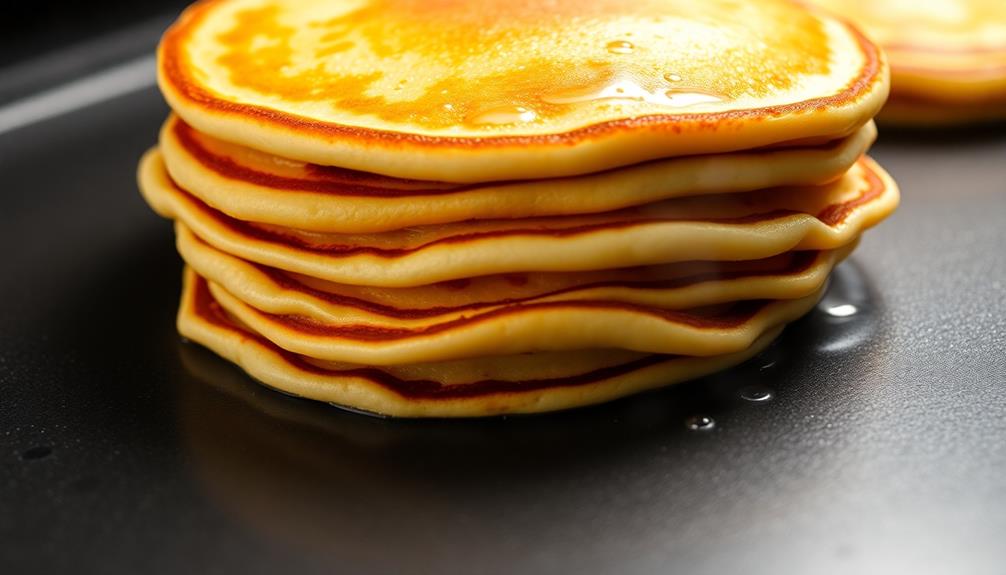
Cooking the pancakes until they're lightly browned is the next crucial step. You'll want to keep a close eye on the batter as it sizzles in the pan. The edges should start to set and turn a beautiful golden color. This is the perfect time to flip your pancakes over. Be gentle, as you don't want to tear the delicate batter.
Once flipped, let the other side cook until it, too, is lightly browned. The key is to find the right balance – you don't want the pancakes to be too dark or too pale. The light browning adds a delightful crisp texture on the outside, while the insides remain soft and fluffy.
Pay close attention to the heat of your pan, adjusting it as needed to achieve this perfect result. With a little practice, you'll be flipping pancakes like a pro, creating a stack of golden, mouthwatering perfection.
Step 5. Serve With Desired Toppings
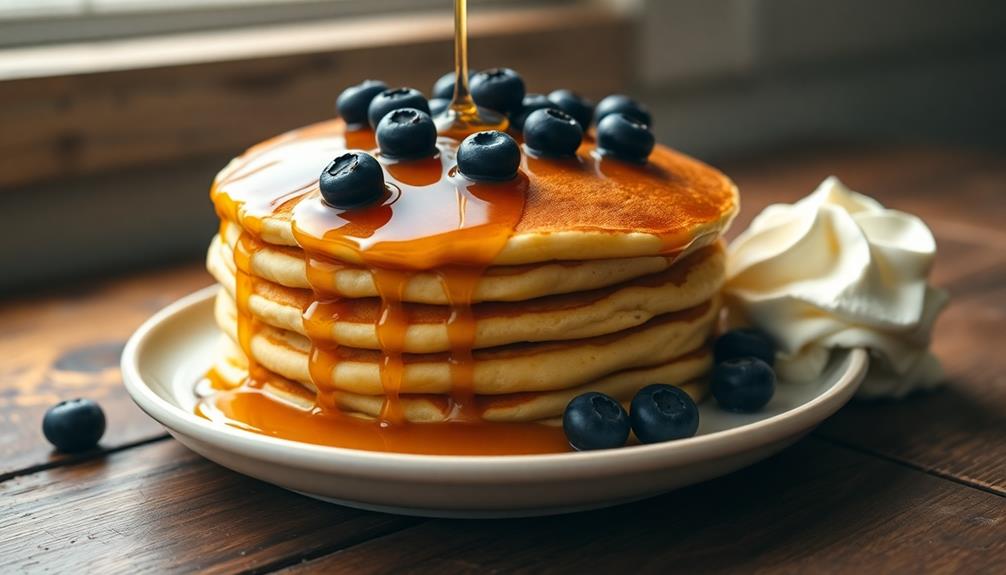
Once the pancakes are perfectly golden-brown, it's time to dig in! The fun part comes now – choosing your favorite toppings.
Will you go for a classic topping like maple syrup or honey? These sweet syrups bring out the natural flavors of the pancakes.
Or maybe you prefer a fruity twist, like fresh berries or sliced bananas. Their juicy sweetness pairs beautifully with the fluffy pancakes.
If you're feeling extra indulgent, try a dollop of whipped cream or a sprinkle of chocolate chips. You could also draw inspiration from dessert ideas like Dirt Cups for a playful touch.
The options are endless! You can even get creative and make your own unique topping blend.
No matter what you choose, the key is to let your personality shine through. Personalize your pancakes to match your tastes.
Pancakes are a canvas waiting to be decorated. So have fun and enjoy your delicious creation!
Final Thoughts
Reflecting on the journey through pancake history, you can't help but marvel at the enduring appeal of this delectable breakfast staple. From the ancient Greeks to modern-day brunch enthusiasts, the humble pancake has captured the hearts and taste buds of people across cultures and eras.
What's it about these fluffy, golden discs that continues to captivate us?
Perhaps it's the sheer versatility of pancakes – the endless toppings, fillings, and variations that allow us to customize them to our liking. Or maybe it's the nostalgic comfort they provide, reminding us of cherished childhood memories and lazy weekend mornings.
Whatever the reason, one thing is clear: pancakes are here to stay, a timeless tradition that will continue to delight and nourish us for generations to come.
Frequently Asked Questions
What Is the Best Way to Keep Pancakes Warm While Cooking?
To keep your pancakes warm while cooking, use a rimmed baking sheet in a 200°F oven. Place the cooked pancakes in a single layer, and cover with a clean towel to retain heat until ready to serve.
Can I Use Other Flours Besides All-Purpose for Pancakes?
Absolutely! You can use a variety of flours besides all-purpose for your pancakes. Try experimenting with whole wheat, buckwheat, or even gluten-free flour to create unique and delicious pancake recipes that suit your dietary needs.
How Can I Achieve the Perfect Pancake Texture?
To achieve the perfect pancake texture, you'll want to experiment with different flours like whole wheat or buckwheat. Adjust the liquid-to-dry ratio, and don't overmix the batter. Cook the pancakes on medium heat for best results.
Is It Possible to Make Gluten-Free or Vegan Pancakes?
Absolutely! You can make delicious gluten-free or vegan pancakes using alternative flours like almond, coconut, or oat flour, along with plant-based milk and egg replacements. Experiment with different recipes to find your perfect gluten-free or vegan pancake texture.
What Are Some Creative Toppings to Try With Pancakes?
You can get creative with pancake toppings beyond the classic syrup and butter. Try fresh fruit like berries, bananas, or apples. Spice things up with cinnamon, nutmeg, or a drizzle of honey. Savory options like bacon or avocado also make delicious additions.
